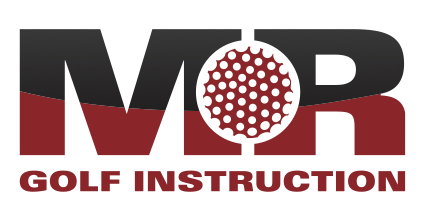As I reflect on the lessons I give, it is really incredible to me how many revolve around a common problem: the tendency for students to “flip” or “scoop” the club through impact. Whether it is full swings, half swings, chips, or pitches, players don’t discriminate – they do it on all of them. While it is very important to swing the club within the right lanes and to have the right swing shape, it’s also very important to be able to return the club to impact in the right position. But what is that position? Let’s examine what really happens at impact and what needs to happen to help you get better at this “moment of truth.”
Let’s cover the reality of impact, and it is this: the golf club is not designed to go under the ball or lift it in the air. Rather, it is designed to strike downward on the golf ball slightly so that the loft (the angle on the face of the club) can help compress the golf ball and create spin, which creates lift. The more the shaft of the club is leaning toward the target, the less loft you are applying to the golf ball (assuming a center hit) and the further you will hit it. Many of the students I teach come into a lesson with no understanding of this key information, so it is always my first point to make sure they understand how impact happens. You MUST understand it! One of the wonderful aspects of having a TrackMan radar is that I can instantly find out how much loft you are applying at impact, as well as how far each shot goes, so we can work on this area and have instant feedback to make it better.
Many of my lessons speak about certain feels they have through impact. Some of the terms they use range from “feeling jammed” or “the club stops”, to talking about hitting the ball higher than normal and losing distance. Once I hear these terms I immediately want to get my students on video, so that they can see their swing and we can confirm what they look like at impact. Remember that I mentioned earlier that the shaft of the club and the hands must be FORWARD of the ball at impact; in most of these cases the students have their hands and the club shaft leaning BACKWARD at impact. This robs them of clean contact and distance, as they are actually ADDING loft, not taking some away at impact.
Many of these issues at impact arise from what not only having an unclear picture of the dynamics of striking a golf ball, but also what happens from the top of the backswing to begin the downswing. If a player reaches the top of their back swing and then release the club too early coming down (meaning they throw or “cast” the club head), they do two things: in essence they are now lengthening the club, and they also cut down on stored power that can be used at impact. When the club lengthens, the arms must pull into the body or risk burying the club too far behind the ball, and fat or thin shots will result. There is simply no way to hit down on the ball and compress it from this position, and in many cases the ball (if any contact is made at all) will fly very high and shorter than normal. Remember the key to better contact is to have a slightly downward strike with the club shaft leaning forward to achieve maximum distance. That is how the Tour players hit it so far with their irons. The lofts on their irons are not bent lower, they just lean the club shaft so far forward at impact that they turn a 7 iron into a 6 or 5 iron.
Also, the early release means that you have expended energy prior to the ball and your club is slowing down at impact. At the top of the back swing, the left arm (for a right handed player) and the club shaft should form roughly a letter “L”; a good image is to keep this angle all the way until your hands reach the area in front of your belt buckle on the downswing. Most players that have issues at impact release this angle much before this point, and their left arm and the club shaft almost form one single line prior to reaching the ball, resulting in inconsistent contact and a severe distance loss. In many cases this early release is so severe that the player will fall back from the target and the club will work upward too much, resulting in topped or thin shots.
Here are a few ways to get better at this area. First, work on short shots like pitches or chips, letting your wrists hinge in the shorter back swing and keeping the hands and shaft forward of the ball as you reach impact. Make sure to lead with your hands and feel like the handle of the club moves ahead of the club head. Once you can start to hit some solid feeling shots, continue to lengthen the swing. But don’t rush it! Starting small is a great way to build proper technique, as attempting to fix impact at full speed is a losing battle. Then, as you progress into full shots, a favorite drill of mine is to lay a towel on the ground 6 inches behind the golf ball. Hit some full shots and your goal is to never hit the towel. If you release the club too early and create a scooping motion, you will snag the towel on the way down and bad contact will result. But if you can keep that angle and lead with the hands going down and through the ball, the results will shock you. Then you will truly have the pleasure of knowing what a purely struck golf shot feels like.




